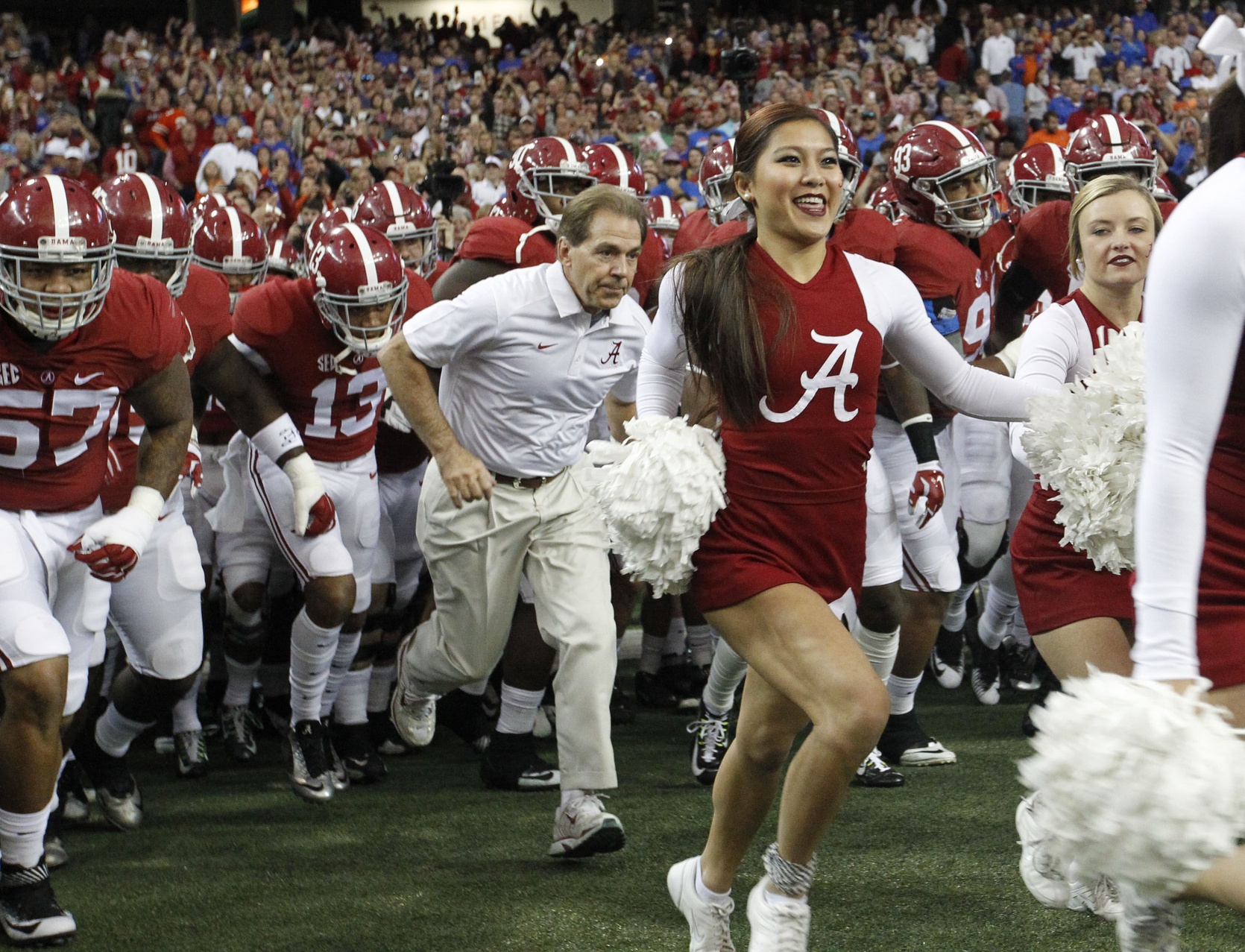
Ranking Nick Saban’s place in history as he chases 5th national title
By Will Heath
Published:
Probably the easiest criticism of Alabama football — from opposing fans, rivals, media types, what have you — has been its obsession with its past and the attempt to resurrect tradition.
Or, to put it more simply, “The Bear is dead. Y’all need to stop trying to dig him up.”
It’s a stupidly simple criticism, but one that looked painfully valid for several years. Paul “Bear” Bryant died in January 1983, only a few weeks after he had retired after a quarter-century in Tuscaloosa. That’s more than three decades ago, and through much of that time, the administration and the fan base at Alabama have been attempting to recapture the glory that occurred in the Bryant era.
From Ray Perkins to poor Mike Shula, Alabama football has occasionally flirted with success, even won a few championships here and there. But they’ve never been the Undisputed King of College Football, as they were when Bryant prowled the sidelines in the 1970s. Those days, everyone assured us, were long gone.
Then Nick Saban showed up in January 2007.
Look, I’m not trying to mythologize the man any more than we already do in this crazy state. Nick Saban doesn’t need me to make his case for him. After all,in the nine seasons since Saban boarded the university plane with then-athletic director Mal Moore to return to college football, Alabama has compiled nearly 100 wins (currently 98-18, with potentially two more games to play in the 2015 season), with four SEC West titles, three SEC titles and three national titles. Alabama has won at least 10 games in each season since 2008. And the Tide has consistently dominated its rivals. Saban’s Alabama has lost to Auburn three times, to LSU twice and hasn’t lost at all to Tennessee.
Crafting someone’s “legacy” is the most cliched nonsense in sportswriting, particularly when the legacy in question belongs to a person who is still working. Nevertheless, permit me a moment to project.
If Alabama wins 2 more games in 2015, then …
• TITLES: Nick Saban will own five national championships as a collegiate head coach (counting his 2003 BCS title at LSU). That’s more than any of his peers, and as many as any other head coach in college football history*.
* – So here is the part where we have to confront college football’s rather murky history with awarding national championships; i.e., until the Bowl Championship Series in 1998, there was rarely an “official” national champion crowned at the end of the season, and in years past it was not uncommon to see multiple teams claim a share of the title. So saying “which coach has won the most national championships” isn’t an easy question to answer; Alabama officially recognizes Bryant as having won six titles during his tenure, though most sites typically only give him credit for five (the 1973 title came from the UPI). Suffice to say, this is probably enough material for a completely different post. No one would argue with Saban’s five consensus national titles, however.
• WINS: Saban would own 100 wins at Alabama, with an additional 48 wins as head coach at LSU and 34 at Michigan State and 9 at Toledo, giving him an astounding career winning percentage of nearly 76 percent.
• REPUTATION: Saban’s reputation as both a defensive innovator and talent evaluator is already nearly unassailable. Google the phrase “Nick Saban NFL players” and you’re going to need some time to sort through them. And he would have conquered the narrative that was dogging him coming into the season — specifically, that his outdated NFL-style defensive concepts can’t hold up in the modern era of college football when everyone runs the up-tempo spread attack.
For Alabama, if Saban retired right now, he would immediately rank as the second-best coach in the history of the program (Bryant still ranks as No. 1 because of longevity, and the fact that Game Day in Tuscaloosa remains basically an extended love letter to the man). What may get lost, however, is how uncommon this extended level of play is in the (Gary Danielson voice) modern era of college football.
Consider that the other great runs by a football program since the turn of this century have been Miami (2000-2002), USC (2003-2005) and Florida (2006-2009). All of them dominated the landscape for a brief period, then flamed out as quickly, either because the head coach fled the premises or because of NCAA troubles.
For Saban, not only has Alabama yet to flame out, but another program he helped resurrect — LSU — hired a different head coach after he left in 2004, and has more or less maintained a high level since then (Saban can’t get credit for Les Miles’ success after 2007, but his four years in Baton Rouge absolutely raised the standard for what fans there were willing to accept).
The fact is, programs rarely stay at the top very long in college football these days, as scholarship limitations — and the looming specter of the NCAA — combine with constant innovations from the sport’s lower ranks to undermine any program that hopes to build a “dominant” franchise.
Even in Alabama’s current run, old foe Auburn actually knocked the Tide off the perch twice — once because Superman fell into its lap, and once because of … well, whatever happened in November 2013. No college football fan in his right mind has any right to expect complete dominance at all times.
But thanks to Nick Saban, Alabama fans now expect more than they have at any time since the 1970s. Heaven help whoever takes the man’s place whenever he does decide to do something else.
Will Heath is a contributing writer for Saturday Down South. He covers SEC football.







